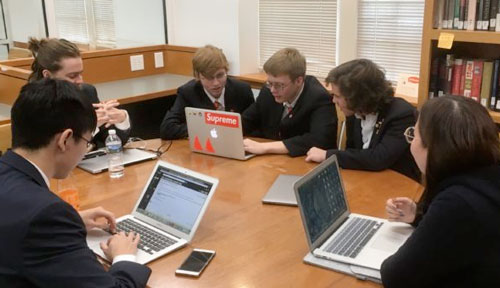Already a member? Log in to the Member Site at members.mastery.org.

A Design Challenge
October 26, 2017
Khan Lab School: Putting Mastery-Based Education into Practice
December 6, 2017The Shift to Competency-Based Education


On Making a Competency-Based Curriculum
Like many schools, we greeted the announcement of the Mastery Transcript with great excitement. We’ve been working on a combination of skills-based curriculum, alternative schedule, interdisciplinary work, place-based education and greater student choice for ten years. The concept of the Mastery Transcript offers the first possibility of external validation for schools like ours trying to take a more authentic competency-based approach to teaching and learning.
As we began work on our new curriculum in 2007, we knew we wanted both to make use of our location on the Rappahannock River and to break down silos between disciplines. We wanted to help students find greater relevance in their learning by making connections in both these areas. We wanted them to discover connections between work in different academic disciplines, and connections with the issues that people in our local community and in our region face. This is based on the conviction embedded in our curriculum that “connections make meaning.”
One of our first moves (after changing our daily schedule to allow for longer class periods and a nine o’clock start time!) was to set up a grade-level team structure for faculty and students. In that arena, we started trying new things. In bi-weekly meetings, teachers began to talk about aligning content, and about student progress. But most of all, they began to plan interdisciplinary experiences that we knew would foster skills:
- Immersion trips: Three day excursions in our region, each tied to the theme of the grade level and to an open-ended question that helps students to wrestle with ambiguous, real issues like the effect of sea-level rise on the historic Chesapeake Bay island community of Tangier.
- PEACS (Placed-based Extensions of the Academic Classroom): One day experiences in which students and teachers visit local people and businesses who can help them understand classroom issues first hand.
- ACEs (Academic Common Experiences): Common activities, such as a film, podcast, or article, that engage students in interdisciplinary, skills-based work
- Grade Level Projects: Year-long projects for juniors and seniors based on a topic of choice, and most recently using the Design Thinking paradigm.
- Performance Tasks: Assessments for integrated experiences based on solving a problem or performing a task rather than taking a traditional test. My favorite has been the one in which small groups of seniors role-play a college admission committee to learn how important the college essay actually is!

But how to assess it all? How to actually tell if students are mastering the competencies we believe they are? Our initial assumption—and we fell squarely into the behaviorist trap here–was that students would not do the interdisciplinary work unless there was a grade. For years we struggled with this (in addition to struggling with finding adequate time). We set up grade level grade books to track it all. We even put a letter grade for this work on our transcript. In the end, we found our teachers either creating make work assignments to have grades or inflating grades for kids who didn’t do the work. We realized that we had to think about this a whole new way. The work is valuable—students were developing skills––but how, in our current educational model, to assess and convey that value?
The short answer is that you can’t, certainly not without running into many impediments, not least the conditioning students carry with them from years of school that external markers—grades—are what gives their work value.
So this year, in addition to embarking on a revised schedule that gives us more dedicated time every week for this work, we made the move to use our integrated work as a testbed for a no-letter-grade approach. We have long had an exit skills document that lays out the skills we want our students to develop. Based on this, we are using three narrative assessments, written in collaboration with students, to provide them and their parents with feedback on their integrated work.
Especially with our younger students, there was definitely fear that they would not do the work without the grade. Yet after being very transparent with our students about this process and the change, we find that we are not, overall, seeing disengagement. Especially with our older students, we are actually seeing more engagement, as they recognize the effort for greater authenticity. “No grades” alone is not enough–clearly it has to go hand in hand with authentic instruction, relationships (we are using a small cohort model), some kind of portfolio, and a supportive culture. But it is a step in the right direction, in the direction of the Mastery Transcript. We are currently taking this narrative assessment approach with a body of work that is “safe,” since it is not on students’ letter-grade transcript. But I believe that an official transcript that recognizes student mastery of competencies—recognizes their internally motivated achievement rather than providing a set of external markers––will, over time, change the culture. I know from twenty years of teaching that students recognize authenticity, and even in the short time we have been doing this, I see students responding positively to personal feedback without grades.
Similarly, when the whole gatekeeping process for the movement to the next stage in their lives feels less like an artificial game, students will also respond positively. And if that process results in college admission, parents will as well. We are working toward the goal of using dual transcripts and ultimately the Mastery Transcript alone, and our initiative this year is a beginning step. This is not easy and there is much work to do by our enthusiastic faculty. But my hope is that this will help all of us down the path to what may become a model for all “grading” . . . once the world of college admission catches up!




